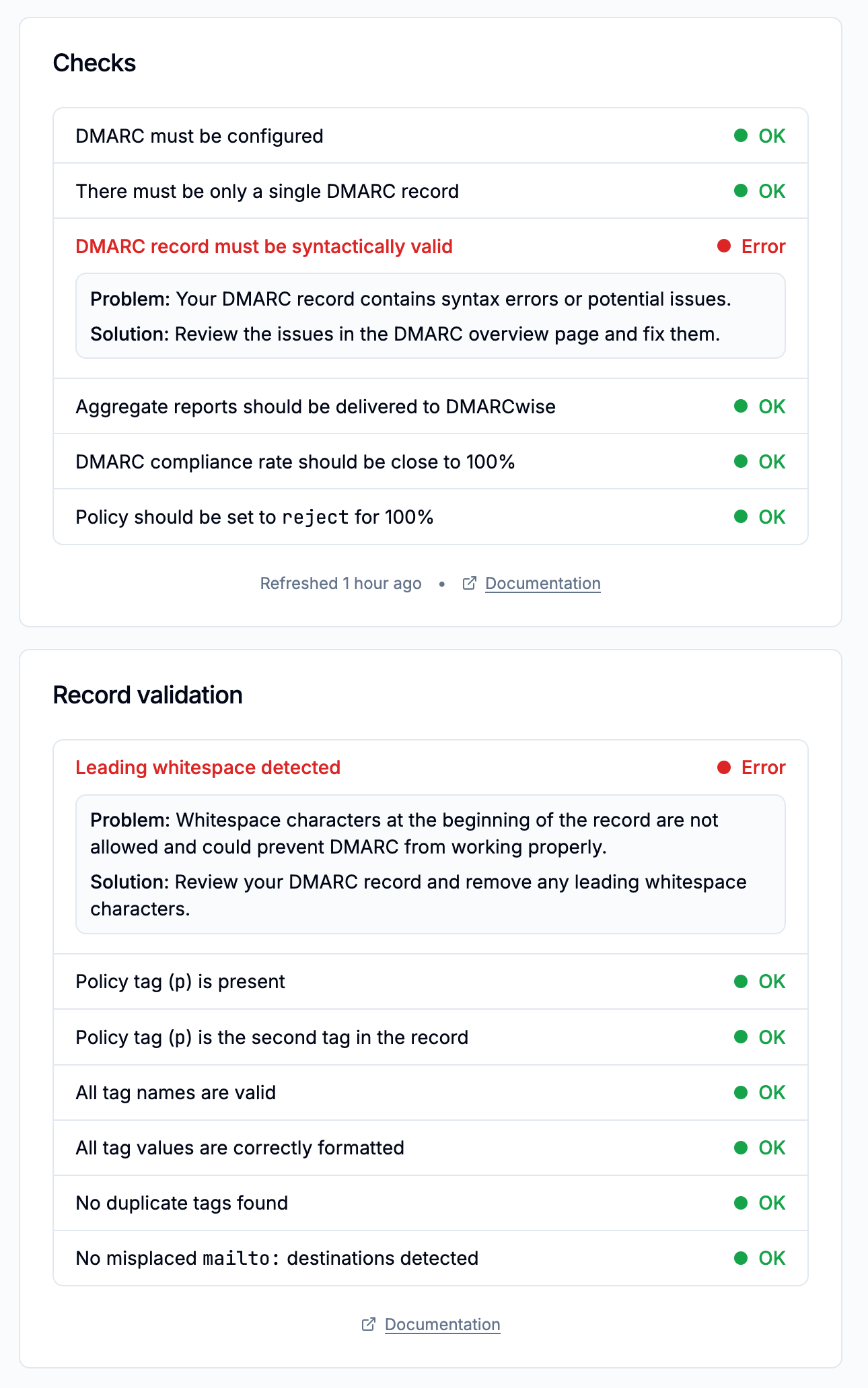User experience
From our hands-on experience, DMARCwise offers a clean and straightforward user interface. We found it relatively intuitive to navigate, especially for those already familiar with DMARC concepts. The dashboards are well-organized, presenting key metrics without overwhelming us with unnecessary data.
However, while functional, the user experience leans towards practicality over flash. It gets the job done efficiently, allowing us to quickly access the DMARC reports and tools needed to diagnose issues. It avoids complex visualisations for the sake of it, focusing on clear, actionable data presentation.
Using DMARCLytics, we noticed a slightly more polished and visually engaging user experience. The "Threat Map" and "Aggregate Geomaps" add a dynamic element to the data, which can be helpful for quickly identifying geographical attack vectors or email sending patterns. It feels a bit more modern in its presentation.
While rich in visualisations, it maintains a good balance of usability. We found that accessing advanced features like configurable alerts was straightforward, and the overall flow for managing domains and reviewing DMARC reports was logical. It seems designed to provide insights quickly, even for those less technically inclined.











































 0 / 5(0)
0 / 5(0)
 0 / 5(0)
0 / 5(0)



